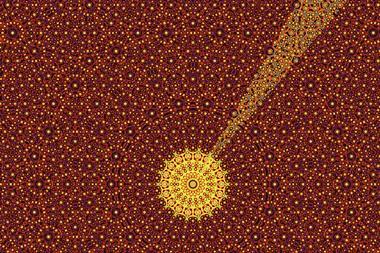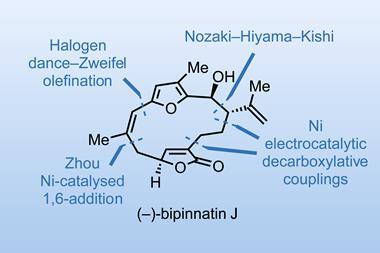Disappearing polymorphs offer a fascinating example of the dark arts of crystallisation
Anyone who has tried to crystallise a stubborn compound will know that the mysterious business of coaxing molecules out of solution and into a regular solid array is very much a dark art. Not everything can be crystallised, and the structure you get if you do produce diffractable crystals is almost as much of a mystery. It’s still very hard to predict how organic molecules will pack in three dimensions, as James Mitchell Crow’s feature on crystal structure prediction explains. While things are definitely getting better, we’re still a long way away from the kind of results AlphaFold can produce for proteins. Protein-folding, although also difficult to predict, benefits from certain constraints that organic compounds – made of a random assortment of atoms bonding any which way rather than chains of a limited variety of amino acids – simply do not.
Anyone who has tried to crystallise a stubborn compound will know that the mysterious business of coaxing molecules out of solution and into a regular solid array is very much a dark art. Not everything can be crystallised, and the structure you get if you do produce diffractable crystals is almost as much of a mystery. It’s still very hard to predict how organic molecules will pack in three dimensions, as James Mitchell Crow’s feature on p42 explains. While things are definitely getting better, we’re still a long way away from the kind of results AlphaFold can produce for proteins. Protein-folding, although also difficult to predict, benefits from certain constraints that organic compounds – made of a random assortment of atoms bonding any which way rather than chains of a limited variety of amino acids – simply do not.

Being able to know what solid form your molecule will take can be of huge importance, especially in the drug industry. Different forms – or polymorphs – can be treated as different patentable entities, so being able to lock down every potential form of your billion-dollar blockbuster can be worth huge amounts.
But what happens when the polymorph that you’ve patented and produced for a few years suddenly vanishes? That is, despite everything in the production line being the same, your drug no longer settles in the structure you expect, but a different one.
This incredible-sounding scenario has happened in the past. The most famous example is probably ranitidine hydrochloride, better known as Glaxo’s peptic ulcer drug Zantac. This was the biggest selling prescription drug in the world in the late 1980s and early 1990s, making twice as much money as the next biggest seller. It existed in two polymorphs, but when the patent on the first form was due to expire, nobody could make it: their attempts all ended up crystallising in the second form, which was the one widely available in pharmacies the world over.
The ensuing court case in the Eastern District of North Carolina must have made for fascinating viewing. Attorneys for the company hoping to produce a generic, Novopharm, expressed high levels of scepticism over the idea of ‘universal seeds’ – tiny particles of the second form that prevented the first from forming. But legendary Oxford chemist Jack Baldwin appeared on behalf of Glaxo, and reported that two of his senior post-docs had been able to produce the first polymorph using the patented procedure (presumably under extremely clean conditions). This was enough to carry the day.
As Jack Dunitz and Joel Bernstein wrote in Disappearing polymorphs, their fascinating 1995 Acc. Chem. Res. article, ‘Once a particular polymorph has been obtained, it is always possible to obtain it again; it is only a matter of finding the right experimental conditions.’ Thermodynamics and kinetics may seem capricious, but they are not truly cruel.

















No comments yet